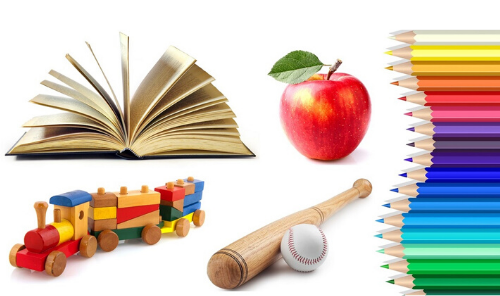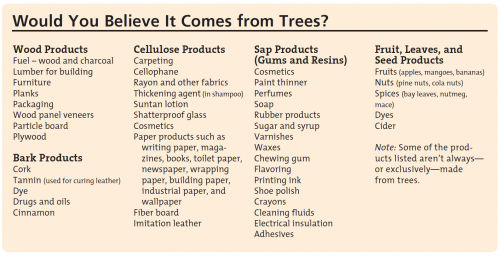PLT was designed with a classroom or another in-person setting in mind. But did you know that you can adapt many of PLT activities to present virtually or assign to your students for independent exploration?
“We All Need Trees” is a great example. For teachers familiar with PLT, it’s Activity #13 in the PreK-8 Environmental Activity Guide, which is also available online. The E-Book (a 460-page PDF with 96 activities), along with online training, can be purchased for just $20 (a 50% discount available until April 30, 2020.)
If you don’t yet know PLT, we also have an abridged version online. Although it does not have the curriculum components of the full PLT lesson, it presents some ideas and questions that you can use with your students.
 Doing the Activity
Doing the Activity
In this activity, students find a photo or select an item in their homes that comes from a tree—such as a book, piece of fruit, or wooden picture frame.
As students share their items, they discuss how tree products are part of our everyday lives. With a few extensions described below, the lesson covers science, social studies, visual arts, and language arts—and builds skills in identifying attributes and components, classifying and categorizing, researching, and evaluating.
So how can you turn what was written as an in-person lesson into a virtual one? Here are a few suggestions from North Carolina PLT Coordinator Renee Strnad to make it a success. The specific ways you’ll conduct the activity will depend on the accommodations that your school has made, such as whether you “meet” as a group for extended periods, have more individual check-ins, or are phoning students. But we hope these ideas will get your own juices flowing:
- Ask your students to find their favorite thing in their house that comes from a tree to bring to your next online session.
- Meanwhile, prepare an online chart (or a paper one that you can hold up to the camera) with four columns: Paper, Wood, Food, and Other.
- When they gather next, ask each student to hold up the item they have chosen, explain its tree connection, and share why they chose that item to share.
- After each presentation, do a quick classification. Ask the presenting student (or all the students) under which of the four columns to place the item.
- Summarize at the end. What do the objects have in common? What is different? What parts of the tree did the various items come from?
- Turn the presentation into a follow-on assignment. Depending on the grade level, the assignment could range from drawing a picture of the item and its tree connection to a few sentences about why they value their item to a longer essay that requires some research.
- To present a more comprehensive list—including many unexpected tree-based products—share the list “Would You Believe It Came from Trees?” from the PLT activity, or develop your own list. (If you do the latter, remember to add surprising products. They will include products derived from cellulose, such as rayon fabric, as well as gums and resins, such as chewing gum and syrup.) A follow-on assessment opportunity presented in the activity is for students to identify two items within each category that are in their homes. They can draw pictures, write down their selections, or share them when you next meet.

Resources for Teachers and Parents
PLT’s online “Connecting Kids to Nature” sheet also includes some family activities and a word search puzzle. You are welcome to download it to share with your students for in-between class sessions, or to point them and their caregivers to other PLT activities for families on our website.
We know how challenging these times are for educators—and kids! PLT can help you take advantage of your students’ immediate environments as you continue to do the great work you are doing!


